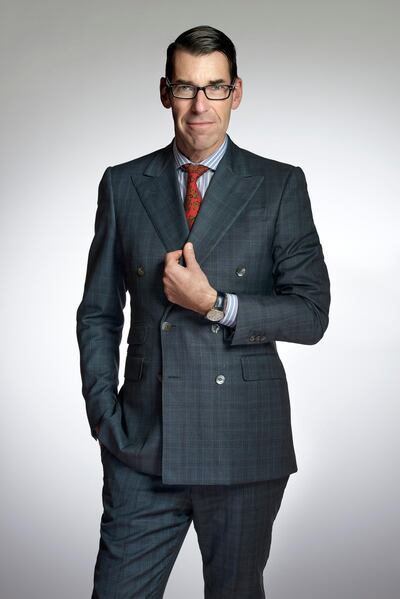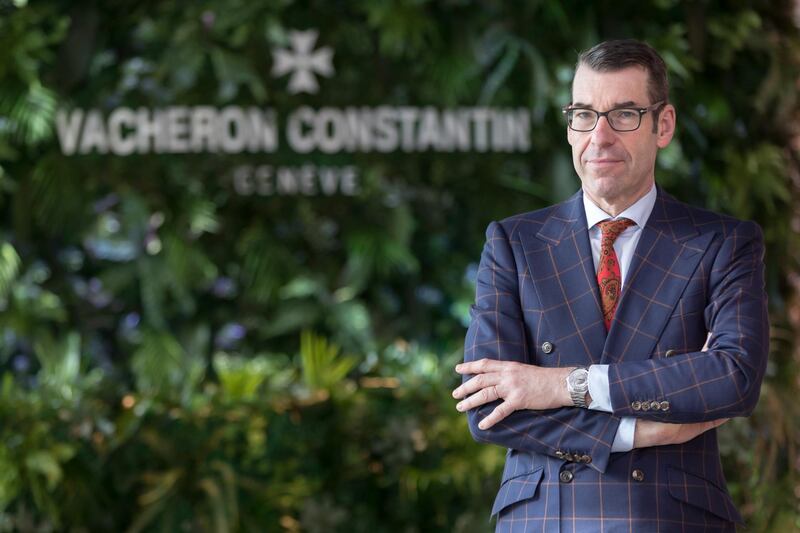“Some of my colleagues call me the walking archive,” Christian Selmoni, style and heritage director of Vacheron Constantin, tells me with a grin. “I don’t think it is a compliment.”
Founded in 1755, Swiss brand Vacheron Constantin prides itself on being the oldest watchmaking manufacture in the world, since it has continued crafting timepieces, uninterrupted, since its launch.
Selmoni joined the luxury watch brand in 1990, and his knowledge of the company’s archive does indeed verge on the encyclopedic. He also hails from a watchmaking family from Switzerland’s Vallée de Joux – the heart of the country’s watchmaking industry – so it was perhaps inevitable that he would end up being an authority on the subject. “My grandfather was the one who really introduced me to it. He was working at home, on open-work skeleton watches, and I spent hours watching what he was doing. His brother was also a very fine watchmaker and we used to have Sunday dinners where my grandfather and his brother would talk about mathematics, astronomy and literature. They were so much more than watchmakers.”
Named style and heritage director for Vacheron Constantin in 2017, after serving as the brand’s artistic director since 2001, Selmoni’s current job is to help uncover the incredible tales hidden deep in the archives. “Obviously, for a brand that has existed since 1755, heritage is a huge part of it. My mission is to showcase, reveal and put a spotlight on the heritage of the house. I am doing my best to promote the legacy through different channels, especially digital, which I think is a very cool way to do it. We have Instagram and every day we are discovering new stories and telling old stories in different ways.”

Part of that story is discovering the brand's links to famous names, including Queen Elizabeth II, about whom Selmoni remains frustratingly tight-lipped. "Edgar Wallace, the director of the original King Kong, ordered a Vacheron Constantin that he designed himself; and then there is the piece we made for King Farouk of Egypt; and one of the most complicated timepieces made in the 20th century.
“Recently, one of my colleagues found a Vacheron timepiece made for Princess Grace of Monaco,” he reveals. “He had a picture of the watch, so he contacted the palace of Monaco, and they said yes, we have it. These kinds of stories are so important for us.”
With no formal records kept over the past two and a half centuries, Selmoni and his team often have to rely on a mix of detective work and educated guesses to uncover the many unique pieces made by the house. “Sometimes we only have a photograph, and we have to find the year and then try to find that in our archives. It’s really like that, so it is fascinating when we find a piece. Maybe the best story is about one of the most famous Vacheron Constantin watches – a pre-Second World War high complication from 1936. We had only one picture of that watch. We knew we had made it, but we had no idea where it was, or if it even still existed.
“Then one day, an auctioneer from Philips came to us and said: ‘We think we have a very spectacular Vacheron complication, from before the Second World War.’ I said: ‘Is there a crown at 12 o’clock, a minute repeater, a trigger at the right and a 31 days retrograde calender?’ He said: ‘I can confirm’. It was the watch, the Don Pancho. When we got it, it was in pretty bad condition, but we restored it and found that we had the whole story.
“We have letters dated from 1935 between Vacheron Constantin and a retailer in Madrid about a client in South America. The watch came back [to us] with a radium luminescent dial, but the picture in our archive doesn’t show this. So we thought the dial is not original, which is a big problem. Then we found a letter saying the client wanted two dials, one with enamel Arabic numerals and one with radium, and that he wanted the radium dial put on the watch. So, this is a priceless example of how we can use the archive to authenticate everything.”
In 2017, Selmoni came across a piece in Italy that was even rarer. It dated back to 1812. “Deadbeat seconds, yellow gold watch, enamel dial, very beautiful. And we were able to buy it back. It was wonderful, because you don’t find watches from 1812 every day.”
As well as uncovering the past, part of Selmoni's role is to advise the brand's design team on which vintage pieces should be revisited for a new audience. "I get to say that I think that this one is a suitable candidate for redesign, which is a lot of fun," he explains. "I found a watch from 1972 in our private collection and it is difficult in terms of aesthetics, but very interesting. So I am trying to persuade my colleagues we need to do a reissue of this watch. So far they refuse."
Vacheron Constantin now has a dedicated Historiques collection, where classic timepieces are re-thought and re-issued. One such piece is the American, where the crown is unusually placed at 1 o'clock. "It was one of the early driver's watches from 1921, and at the time, cars used to have huge steering wheels. So we shifted the whole dial [45 degrees clockwise] to make it easy to read, and there is the version for the left-handed driver too.
"There is also a super watch from 1948, a triple calendar watch that we have revisited, and the Cornes de Vache chronograph from 1955. It is strict and readable, however, there is fantasy in the lugs – they are like cow horns."
Selmoni’s archival work will never be done, he says enthusiastically. “We don’t know how many vintage Vacheron Constantin pieces there are around. We must have thousands of them out in the market somewhere, still working and not damaged. So we are watching all the time.”






